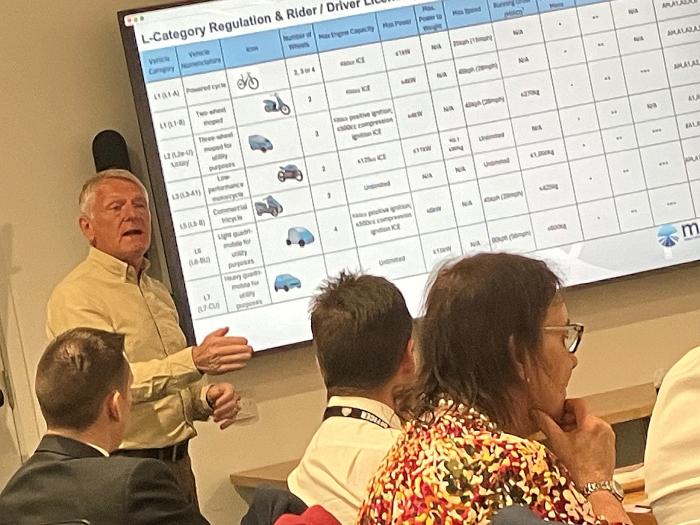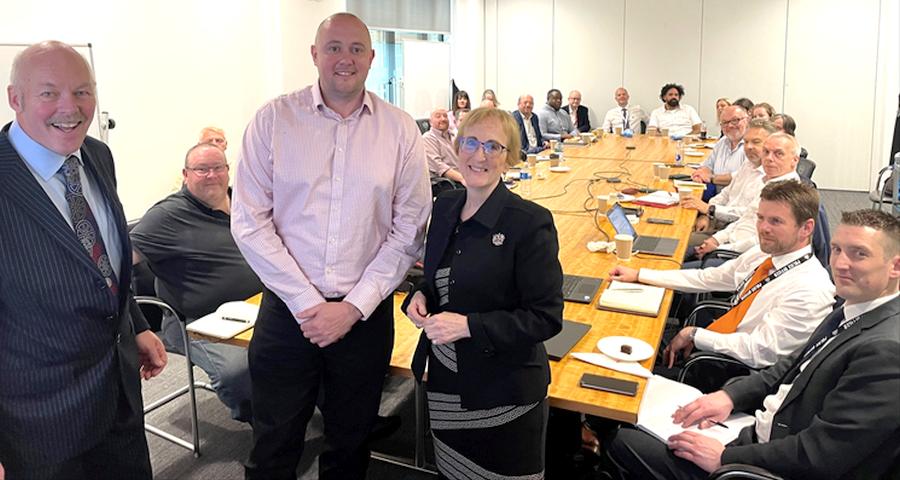Definitions for cargo bikes UK wide – best practice document to be formed.
Alan Dickinson, Evri named chair.
Cargo Bike, the logistics sector has asked for definition, regulation detail and best practice. LSA were at the table.
The LSA, an alliance of West Thames College and logistics operators in West London and across the UK are building a reputation for being at the heart of UK logistics, the best practice vision of LSA was reinforced with a place at the table with a group of Govt depts from DVSA to DEFRA and logistics operators, both next day and same day, to see the launch of a new Cargo Bike group that is set to define regulations and best practice for the growing number of Cargo Bikes in the final mile delivery of goods to door.
Cargo bike numbers are exploding across the UK, size shape and even wheel count varies, IOC fellows have asked for definition and best practice of the cargo bikes that are delivering green final mile UK wide. The new sub group led by the Institute of Couriers will focus knowledge, define the cargo bikes and review regulations with a the delivery of a best practice guide. LSA will keep you posted in the Wed logistics news emails on the next steps.
LSA Chair, Carl Lomas was at the express final mile heads of industry table to see the national sub group for Cargo Bike formed, May 21st 2024. It was a full house of final mile from nationals to regional and SME, next day and same day were at the table to recognise the IOC steps to formalise the sector views on the growing number and variety of cargo bikes across the UK.
The cargo bike sub group chair was announced by City of London Alderman and London road safety chair, Alison Gowman, ‘its Alan Dickinson from Evri.’
Alan delivered an opening speech with a call for members of the group, Alan set a first virtual date for July 2nd. ‘Fellows have asked for definition, regulations and best practice for the growing number of cargo bikes across the UK. What seize should they be? what weight can they carry? What are the regulations for them? What is the best practice?’ Alan then introduced two experts to bring a lens to the cargo bike, Peter Eland from Bicycle Association and Tony Cambell from the MCIA who detailed the light L category vehicle regulations to fellows at the table.
New Cargo Bike chair Alan Dickinson welcomed by Hon fellow of the IOC, City Alderman, London Road Safety Council Chair, Alison Gowman, Alison Gowman welcomed Alan as the new chair and welcomed the Inst of Couriers steps to launch the new cargo bike group with a national focus for final mile.
The Alderman commented, ‘Cargo bikes are growing in number for delivery across the City, their contribution to clean air quality is essential. The Institute of Couriers launch of a dedicated sub group for Cargo Bikes brings a great motivation to define the weights, volumes, sizes and wheel numbers for the growing number of vehicles. I welcome the inaugural chair, Alan Dickinson, I support his call to members of the group and wish them well with the future agenda to form best practice for cargo bikes on the streets.’
Alan Dickinson, inaugural chair of the IOC Cargo bike group made a national call for fellows to put forward members of the group, Alan outlined the green air contribution of the cargo bikes, their impact on use of road space, cycle lane, road and parking.
Alan explained The first steps of the group will be to formally define the cargo bike category and then move to a best practice draft for the sector. Alan welcome both the Bicycle Association and the Motorcycle industry Association to explain the current lens for cycle cargo and light vehicle categories in final mile delivery.’
Peter Eland, Chair of the Bicycle Association, BA, UK industry trade association, explained the existing regulations of cycle cargo bikes. Outlining the current rules and regulations which apply to cargo cycles in the UK.
Tony Campbell, chair of the Motorcycle Industry Association, MCIA, explained the L Category groups of light vehicles. ‘Powered two, three and light 4 wheel, scooters, motorcycles, trikes and quadracycles, it’s a very complex compliance area. There are both licence and regulation issues, power to weight ratio, speed limited, dimensions and weight all play a part.’ Tony spoke L1 to L7 and explained licence requirement, adding regulations around helmet use.

Tony Campbell from MCIA talks L Cat detail for light vehicles





